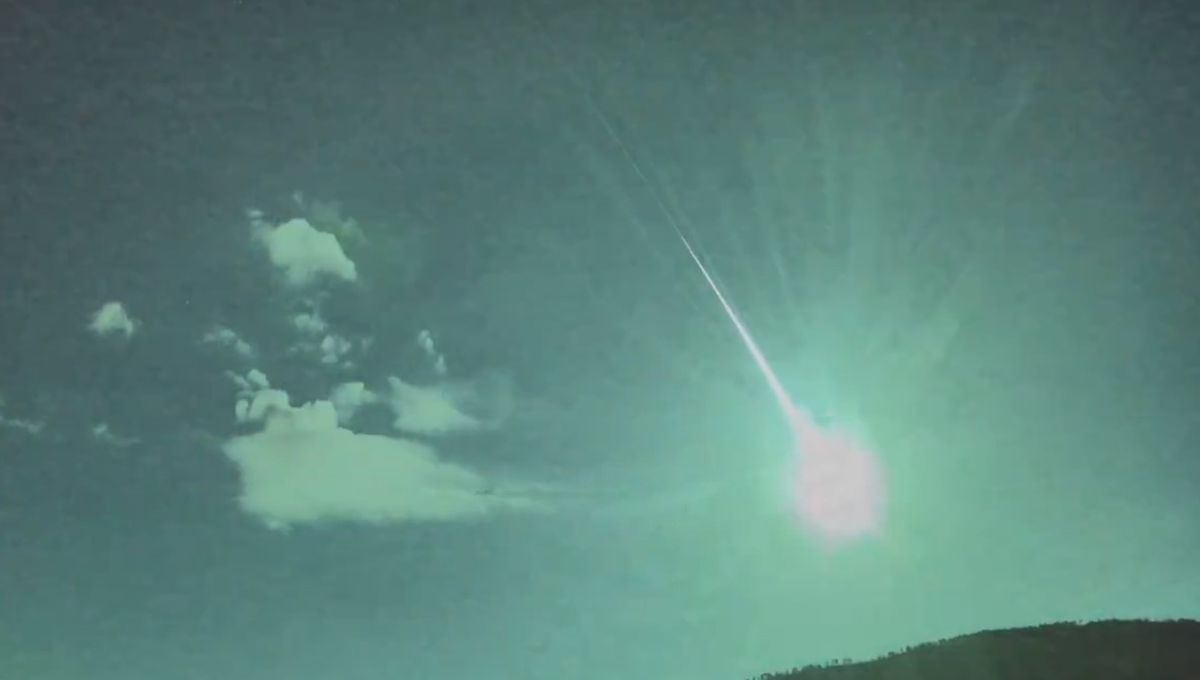
Shortly before midnight on Saturday night, an enormous blue-green fireball lit up the skies over Portugal, turning night back into day for a few incredible seconds. Also visible across parts of Spain, the light show was the work of a comet that burnt up in the Earth’s atmosphere as its race across the cosmos came to a dramatic end over the Atlantic Ocean.
I was at a party in the mountains of central Portugal at the time of the celestial display. The night was a cloudy one, strangely dull for a part of the world that is usually blessed with dazzling starlight after sundown.
Yet all that changed when, at approximately 11.45 pm, a greenish hue began to illuminate the scene, revealing the contours of surrounding hills that had been cloaked in darkness. At first, it seemed as though some sort of expensive lighting effect had been put into operation by the party’s organizers, but as the glow intensified over the next few seconds it became clear that something truly amazing was unfolding above us.
As the comet passed overhead, its luminosity was so extreme that we found ourselves plunged into broad daylight, with views extending for miles into the distance as though the planet had suddenly rotated a full 180 degrees. And then, as abruptly as it appeared, the comet vanished and the lights went off again.
Shortly after the event, the European Space Agency (ESA) announced that its “fireball camera” in Cáceres, Spain, had captured footage of a “stunning meteor”, suggesting that the intergalactic visitor was a piece of space rock. However, subsequent analysis by both the ESA and the Calar Alto Observatory in southern Spain revealed that the object was in fact a comet.
“It seems this was a cometary particle. The entry speed was between 44 and 45 [kilometers per second, 27-28 miles per second]. It overflew Spain and Portugal and then burned up at around 60 kilometers [37 miles] of altitude above the Atlantic,” Head of the Planetary Defence Office at ESA, Richard Moissl, told IFLScience. “For sure, not a meteorite.”
Traveling at 161,000 kilometers per hour (roughly 100,000 miles per hour), the hunk of ice and dust caught fire as it broke apart in the atmosphere at a height of 122 kilometers (76 miles) above the ground before burning out once it reached an altitude of 54 kilometers (36 miles). Initial reports suggested that the projectile touched down in the town of Castro Daire in central Portugal, although the ESA says it’s highly unlikely that any meteorites actually made it to the ground.
Fireballs like this are made of the same stuff as the shooting stars that streak across the sky when the Earth passes through the debris field of a comet. Generally, these fragments of cosmic litter are completely obliterated long before they land, and those that do survive their descent typically do so as dust or small particles of rock.
The difference between this bolide and other shooting stars was its size. It’s pretty rare for anything this big to collide with our atmosphere, and while the spectacle may have added a touch of magic to Saturday’s party, let’s hope nothing too much larger pays us a visit – or our partying days could be over.
Source Link: Rare Fireball Comet Turns Night Into Day Over Spain And Portugal In Spectacular Footage